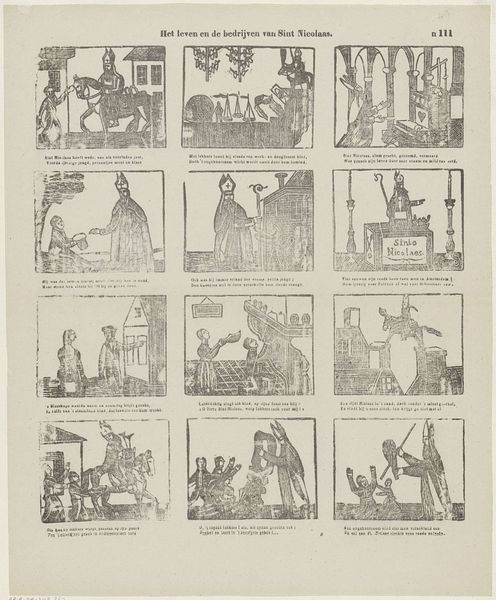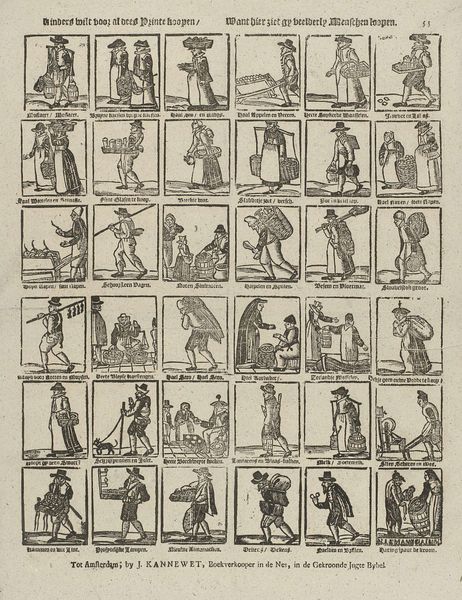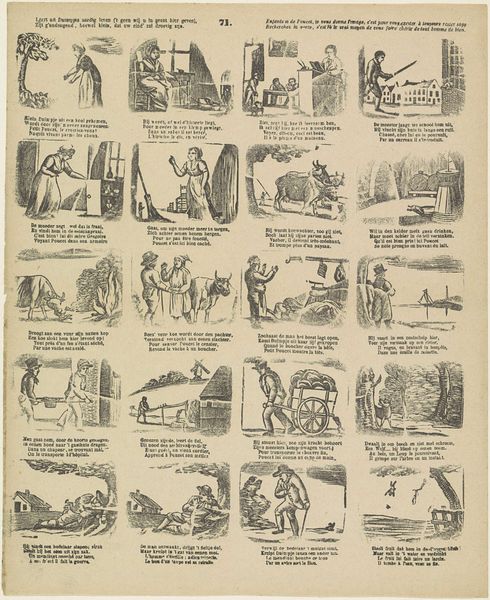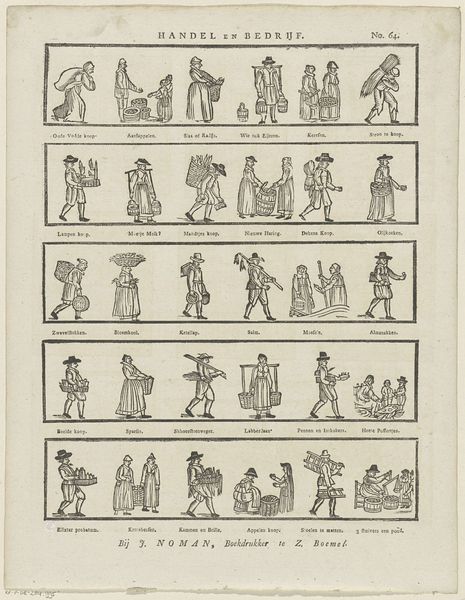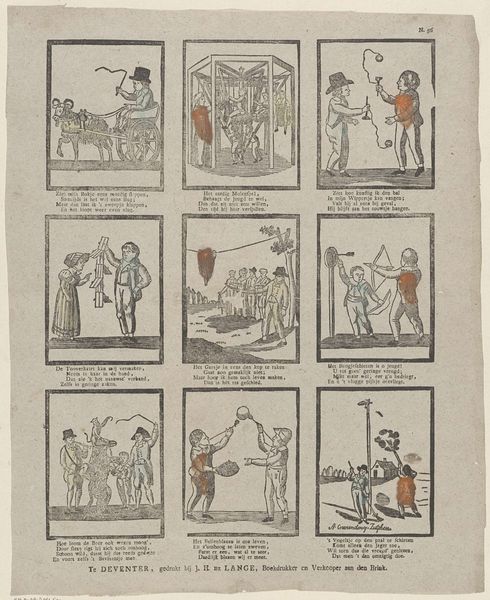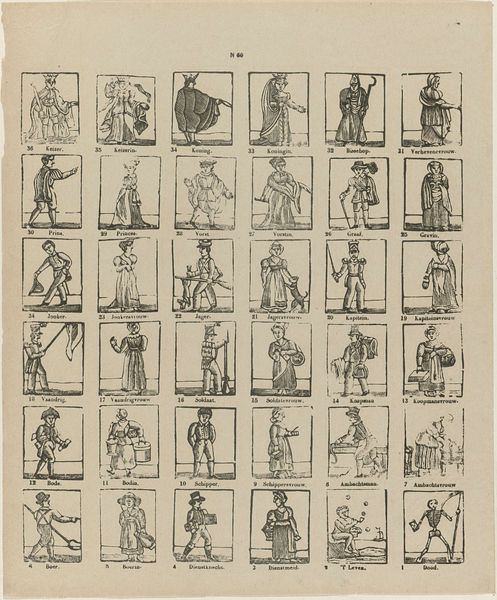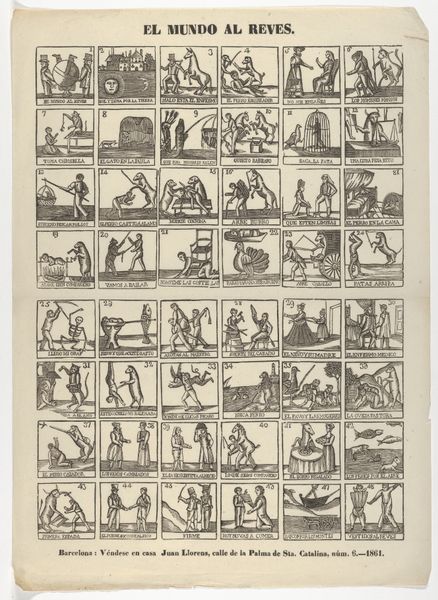
Kan verscheidenheid vermaken, / Dan vindt gij, o lieve jeugd / In dees mengeling van snaken, / Zeker uw vermaak en vreugd 1827 - 1894
0:00
0:00
graphic-art, print
#
graphic-art
#
comic strip sketch
#
quirky sketch
#
narrative-art
# print
#
sketch book
#
personal sketchbook
#
idea generation sketch
#
sketchwork
#
thumbnail sketching
#
comic
#
sketchbook drawing
#
genre-painting
#
storyboard and sketchbook work
#
sketchbook art
#
realism
Dimensions: height 374 mm, width 311 mm
Copyright: Rijks Museum: Open Domain
Curator: This print, housed here at the Rijksmuseum, is titled "Kan verscheidenheid vermaken, / Dan vindt gij, o lieve jeugd / In dees mengeling van snaken, / Zeker uw vermaak en vreugd," roughly translated to "If variety amuses, then you, dear youth, will surely find amusement and joy in this mixture of jests." It was created by Alexander Cranendoncq between 1827 and 1894. Editor: My first impression is… organized chaos! So many little scenes packed together; it reminds me of early comics, but with a strange, antique seriousness to it. Curator: Precisely! The format evokes chapbooks, popular at the time, using sequential imagery married to short poems. The text, which accompanies each image, layers moral lessons within lighthearted, genre scenes. See how everyday interactions—courting, chores, familial gatherings—become symbolic of youthful lessons and societal expectations. Editor: So, mass production impacting subject matter! Makes sense. It's not individual portraits, but repeatable images of "types," and the etching process meant they could produce many, efficiently spreading not just imagery, but behavior norms. What materials were circulating alongside these prints—children's primers, instructional pamphlets? How does print culture connect with evolving ideas about childhood during the period? Curator: That's insightful. Think about how these images functioned culturally. The print’s use of visual metaphors acts as mnemonic devices. For example, in one vignette, we see a youth captivated by butterflies; representing fleeting temptation and the loss of innocence. In this sense, seemingly mundane, commonplace activities, get charged with deep significance, resonating within collective, cultural memory. Editor: And I see how that butterfly motif could easily replicate across other forms—textiles, ceramics, even ephemeral goods. Considering the artist as simply one component in the machine helps contextualize Alexander Cranendoncq’s contribution to Dutch visual culture. Curator: Ultimately, this is a print designed to resonate with both the head and the heart, simultaneously didactic and entertaining. Editor: Indeed. Peeling back the layers reveals how intertwined social messages, production, and materiality truly were.
Comments
No comments
Be the first to comment and join the conversation on the ultimate creative platform.
